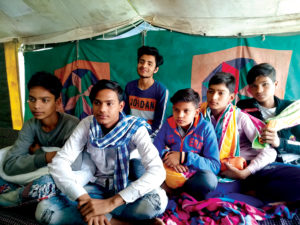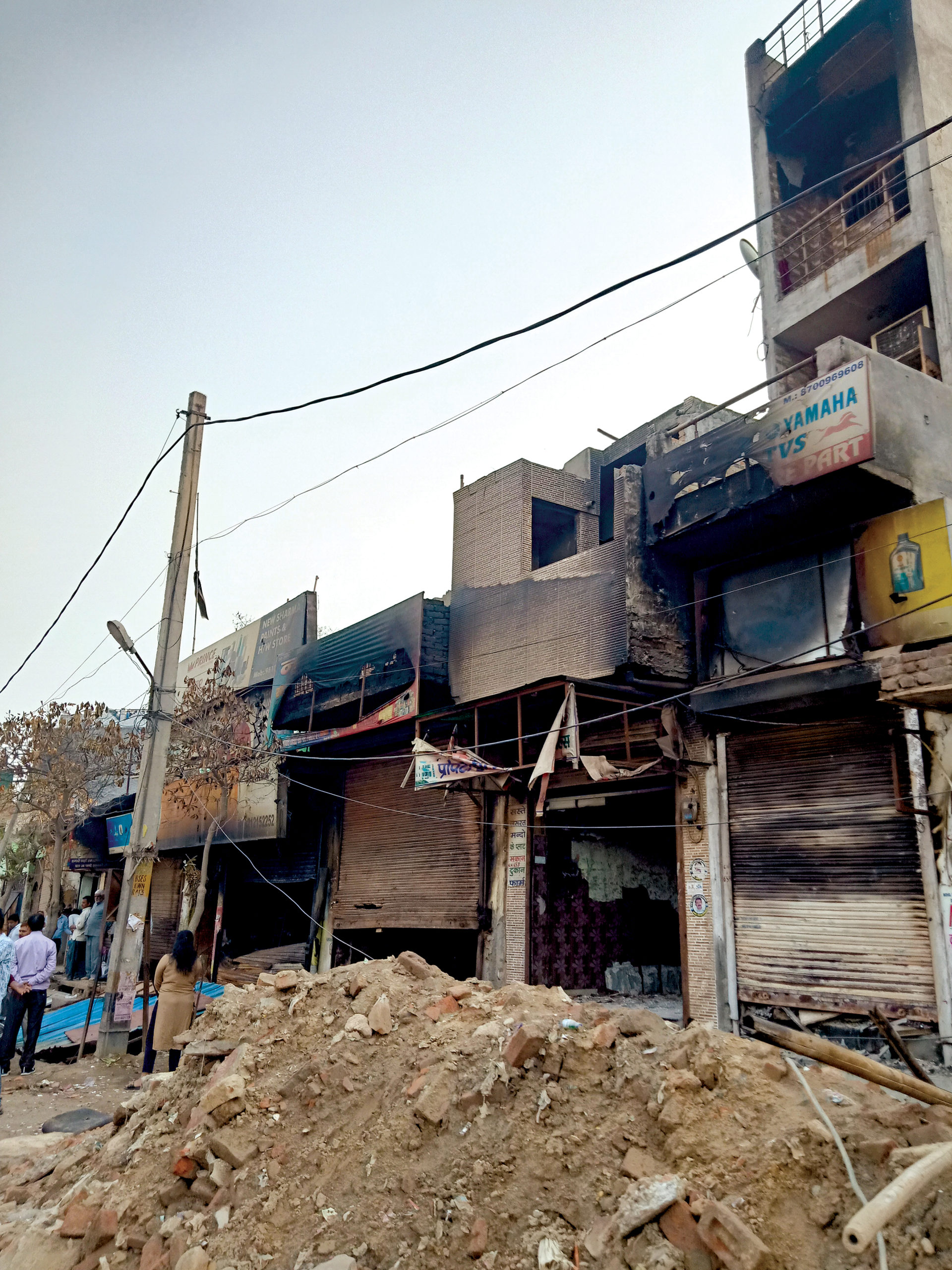While most residents of riot-hit areas say it was outsiders who indulged in violence, simmering communal biases definitely played a dark role
THE DELHI riots, that jolted the entire country, had many stories of communities cooperating with each other, but this cannot eclipse the fact that a Hindu-Muslim gulf exists in the region. And the riot is merely an effect of the communal time-bomb which was ticking for a significant period of time.
Reporting from various regions of North-East Delhi, Patriot found that the tension between communities is palpable. And that the divide is mostly issue-specific. Even in areas where communities supported each other during the riot, people’s conversations have a communal bias.
Anand Prakash Rana, a resident of East Kamal Vihar, a locality which helped their Muslim neighbour flee to safety, blamed Muslims for the riot, “Muslims from the nearby region were doing this rioting in order to vilify Hindus. A Hindu would never indulge in violence. Muslims came with sticks and petrol bombs, wearing helmets in this area and torched shops. But we want peace,” Rana says.
The inter-community distrust is so palpable that despite very visible police and military deployment, residents don’t feel safe and some of them are planning to migrate. Fardeen, a Class 11 student who is staying at Mustafabad relief camp, and a resident of Shiv Vihar, the worst affected region, says, “My house is safe because it adjoins our Hindu neighbour’s. if someone had burnt it, flames would enter Hindu houses too. I don’t feel safe here, therefore we are planning to go back to UP, from where we came.”
Fardeen has a poignant question: Who will guarantee that such riots would not take place in the future? “Riots are rare, but we are afraid to stay here any longer. We don’t know what will happen next.”
Many teenagers at the relief camp at Mustafabad, who were beaten by a mob, told us they were attacked because they are Muslims. Asif, a 19-year-old boy, described what has happened with him. “We were coming back from Kasabpura as we went there for Ijtemah. A mob surrounded us at Khajuri Khas and beat us with sticks. We somehow managed to flee and reach this camp.”
The language of these teenagers showed their vulnerability and fear was very visible in their eyes.
Mohammed Farooq, a resident of Khajuri Khas, complained about his Hindu neighbors who were questioning him over talking to media about his losses. “My house is burnt, I lost everything but when I complain about it, I am considered to be in the wrong. Why can’t I talk about my plight?” Farooq alleged that what happened would not be possible without the involvement of a local. “How the mob know whether a particular house is that of a Hindu or a Muslim?” Farooq asks.
Like Farooq, many other Muslims and Hindus alleged local involvement in the riots. Prakash Devi, whose home was safe but was witness to all her neighborhood Hindus’ home burning says, “We couldn’t recognise them but they were from a nearby region because they were targeting only our homes.” Though the prevalent narrative of the residents of North-East Delhi is that outsiders did the rioting, looking at the geographical layout it is not possible that a riot of such a scale could take place without any local support. This implies that the underlying communal divide played a definitive role in this riot.
North East Delhi is a densely-populated region sharing borders with UP. According to the 2011 Census, it has a population of over 22 lakh, people of which 69.22% are Hindu and 29.34% Muslim. Hindu-majority, and Muslim- majority areas are divided by roads and by some symbolic boundaries like a temple or a mosque. Shiv Vihar is Hindu majority and when we go towards Mustafabad, Muslims become a majority. These areas are some of the least developed regions in Delhi.
The violence that ravaged this region started with a violent clash between supporters of the Citizenship Amendment Act (CAA) and protesters against CAA. What followed was a gruesome communal riot that killed as many as 53 people. The CAA was one of the most contentious issues on which protests by Muslims happened in North East Delhi’s Jafrabad, that angered Hindus of this region. Rakesh Kumar, who runs a general store at Shiv Vihar says, “Protests against CAA were anti-national. Those who are doing it should not be allowed to block the roads.”

Academicians like Ashutosh Varshney, a prominent political scientist, believe that urban centres are the breeding ground for a riot due to an “anonymity factor”. His book, Ethnic Conflict and Civic Life: Hindus and Muslims in India, tells a lot about the anatomy of riots. The book also suggests that the population majority of a certain community in a specific region has not much to do with the riot. Riots are caused by a lack of community cooperation in everyday lives.
Ashish Nandy in his recent interview with Telegraph was asked what moves normal people to kill. “Normal people are mostly moved by propaganda and fake news and are very angry that the other side is killing and we are not killing enough,” he explains.
While this riot was one of the most unfortunate events in Delhi, it can be said in hindsight that the region was on the tipping point. Now many affected people are planning to leave the place, while hoping they don’t have to relocate if this communal tension dissipates and new ties of cooperation and support emerge.





